Abstract
Since Yersinia enterocolitica, now classified as a member of the Enterobacteriaceae, was recognized as a distinct species in 1964 it has been isolated with increasing frequency from man and animals (including dogs and pigs) and from some human foods. Y. enterocolitica infections are now seen as a cause for some concern in both human and veterinary medicine. The organism is commonly found in specimens from swine slaughterhouses and has been isolated from samples of market meat, vacuum-packed beef, mussels, oysters, and ice-cream. It has also been found in nonchlorinated well water used for drinking purposes. Infections in man therefore probably have an alimentary origin. Only 23 human infections were recorded in 1966 but the number increased to over 4000 in 1974. However, reported incidence is affected by growing awareness about the role of the organism in human and animal disease and by intensive laboratory analyses. While knowledge about the geographical distribution of Y. enterocolitica is still fragmentary it is clear that infections are very frequent in some parts of the world and probably common but unrecognized in many countries. The most common symptoms of Y. enterocolitica infections in man are fever, abdominal pain, and diarrhoea. In the USA most isolations in human infections were made from blood and mesenteric lymph node samples. The pathogenic mechanism is not known. In one experiment involving a human volunteer subject a dose of 3.5 × 109 organisms was required to produce an infection. Only recently has some success been obtained in establishing experimental infections in mice, guinea-pigs, rats, and rabbits. Laboratory cultivation techniques for Y. enterocolitica are described together with a table of minimal tests for characterizing the organism and two biotyping schema. Little is known about methods for controlling this disease, but environmental hygiene and sanitation with regard to food and water should apply.
Full text
PDF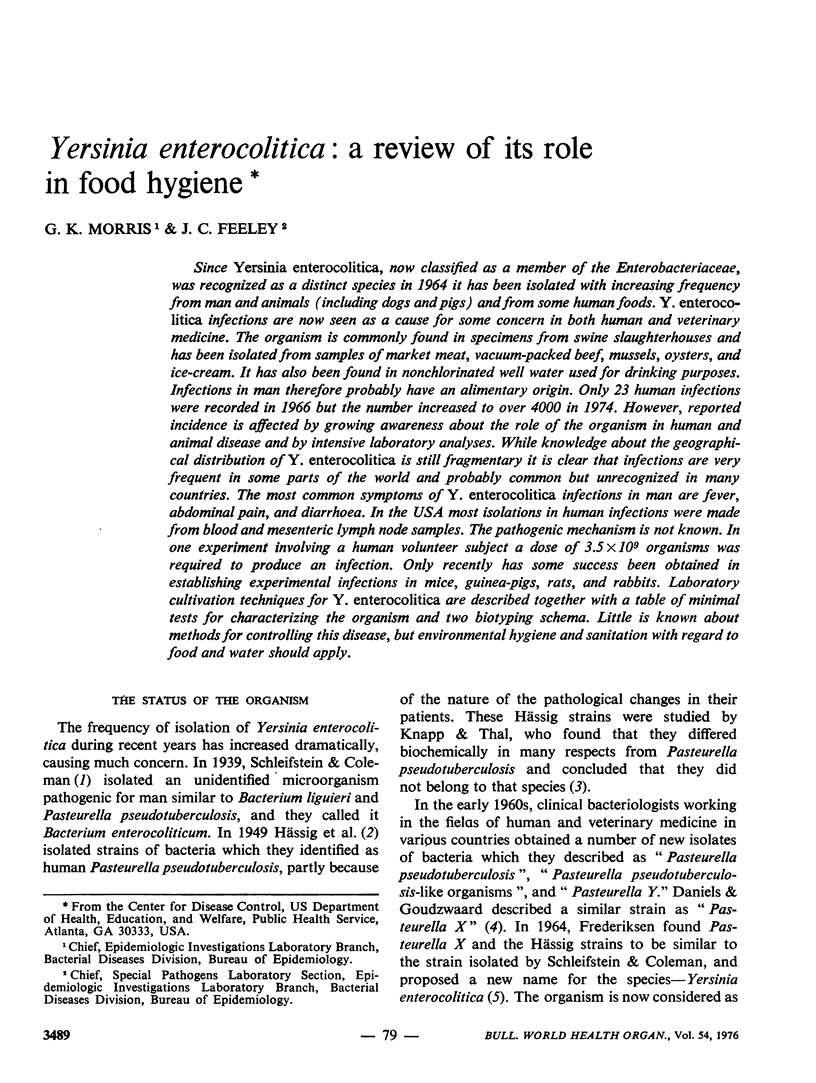
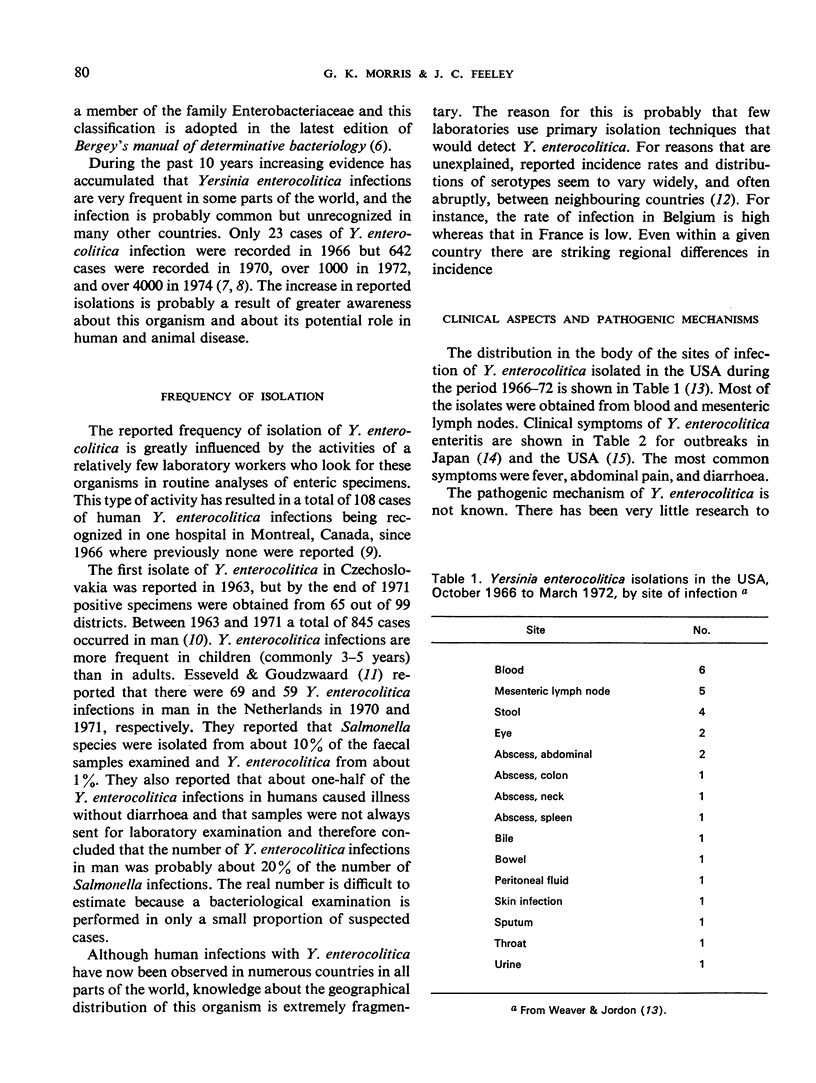
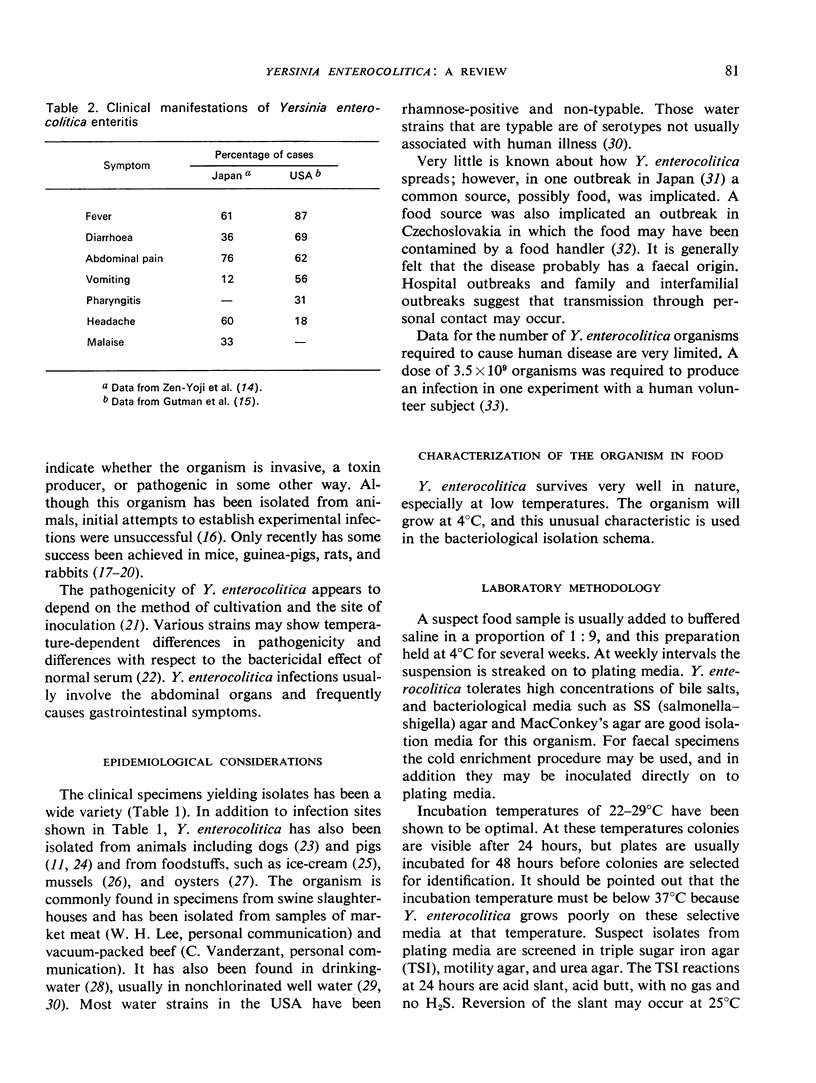
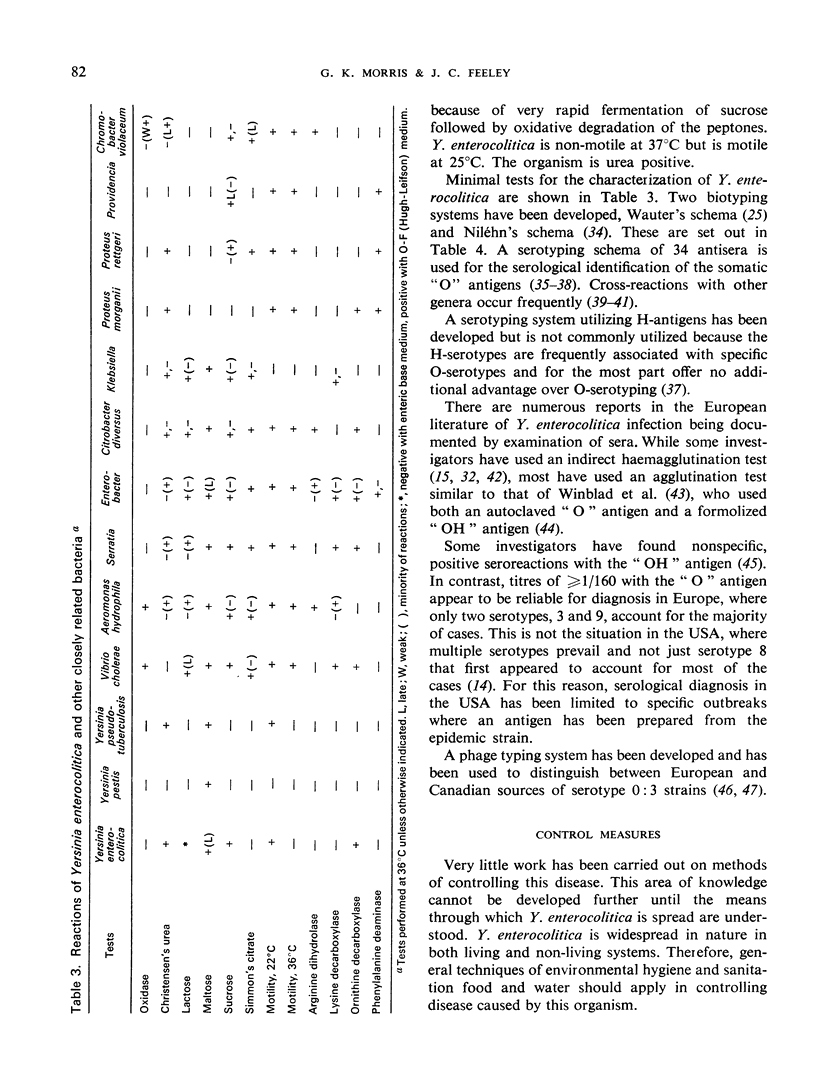
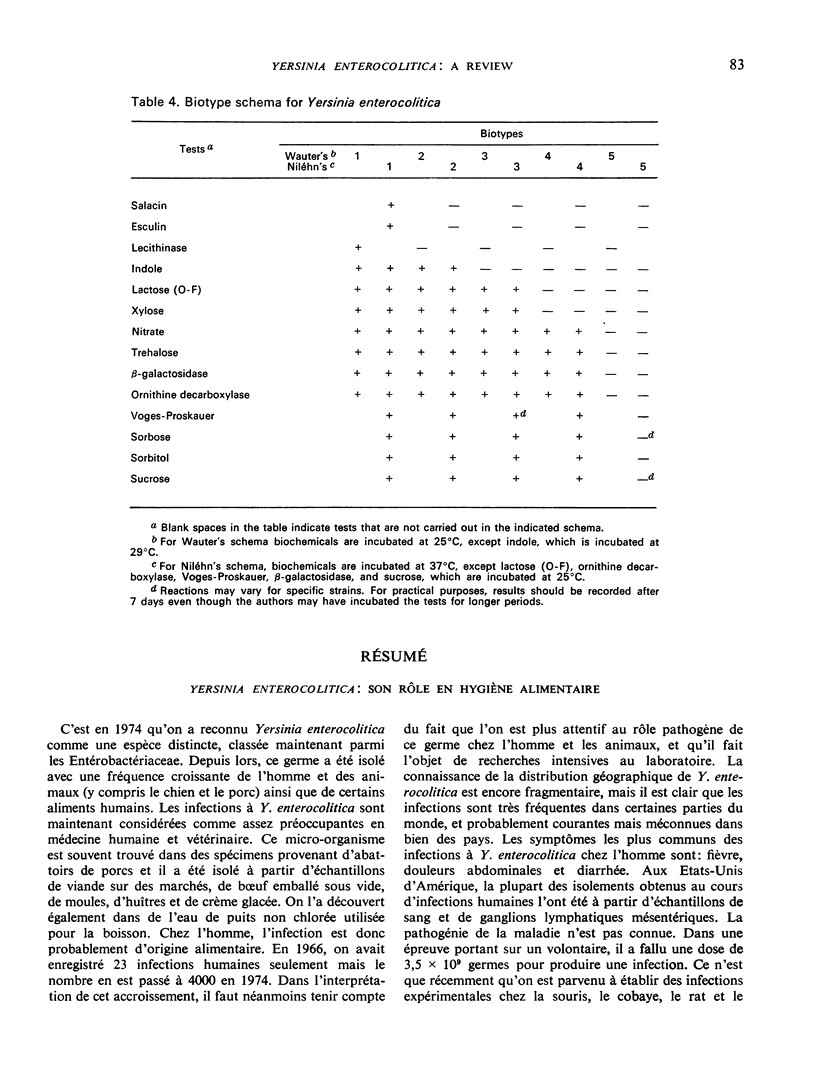
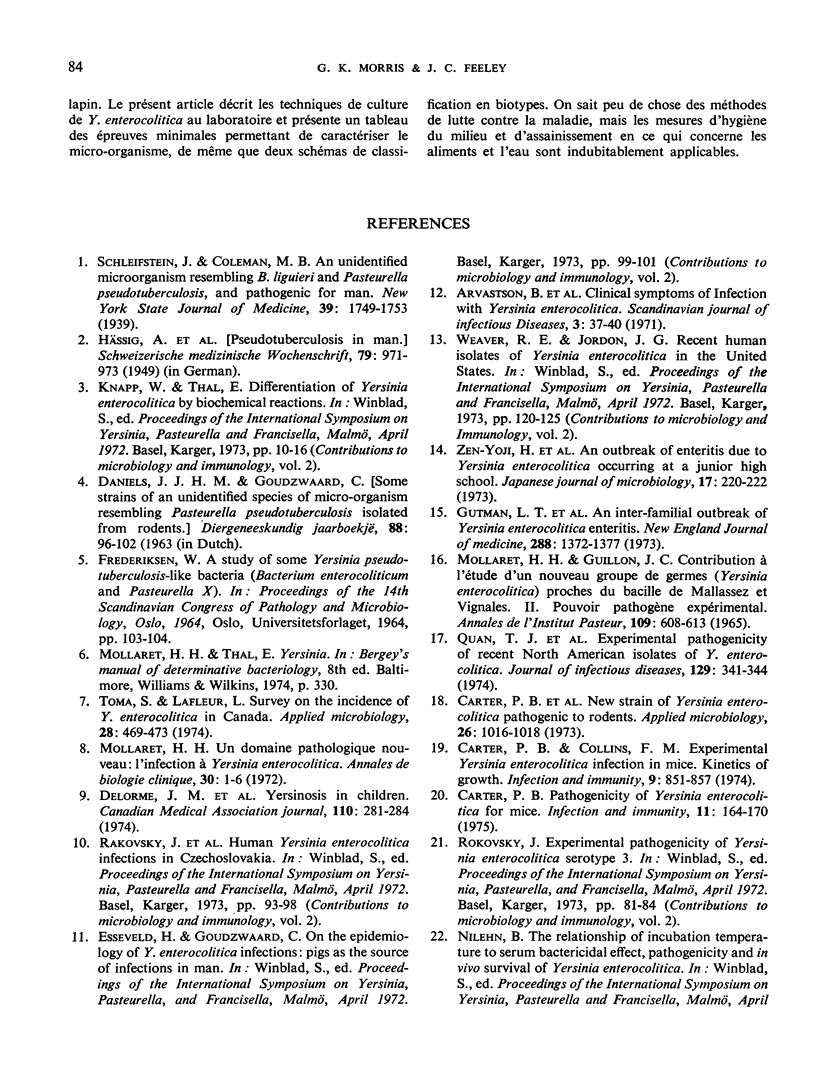
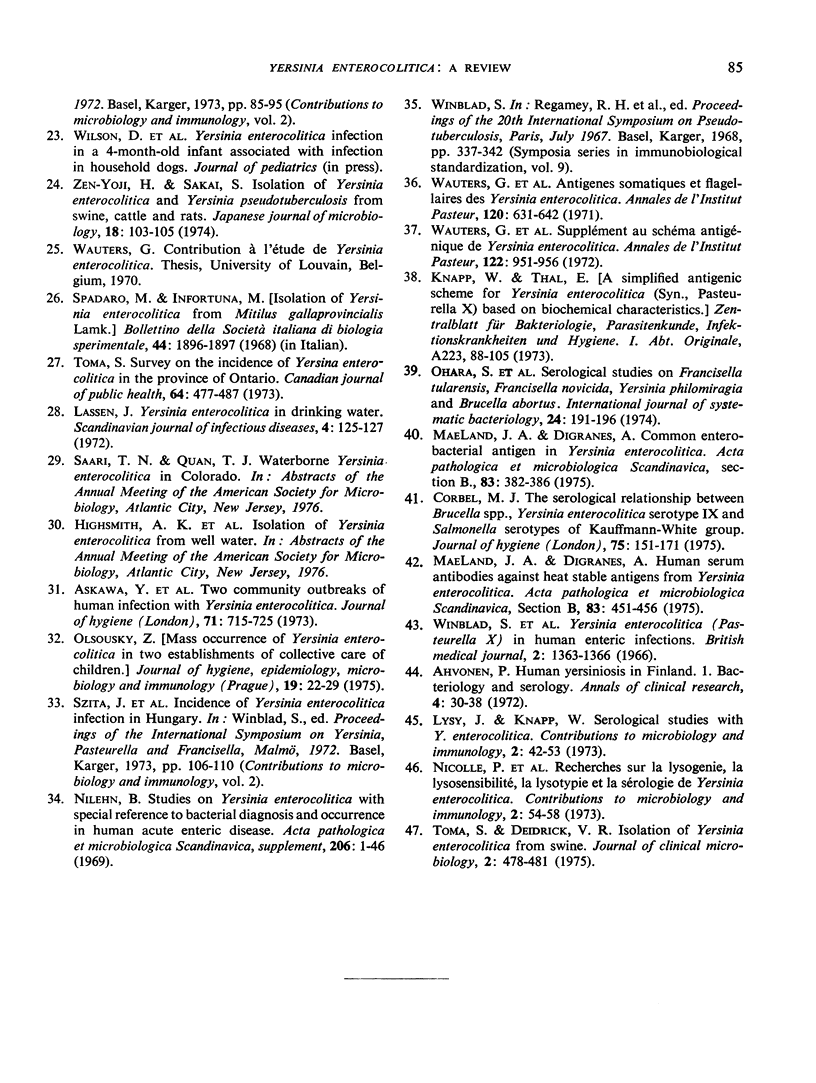
Selected References
These references are in PubMed. This may not be the complete list of references from this article.
- Arvastson B., Damgaard K., Winblad S. Clinical symptoms of infection with Yersinia enterocolitica. Scand J Infect Dis. 1971;3(1):37–40. doi: 10.3109/inf.1971.3.issue-1.06. [DOI] [PubMed] [Google Scholar]
- Carter P. B., Collins F. M. Experimental Yersinia enterocolitica infection in mice: kinetics of growth. Infect Immun. 1974 May;9(5):851–857. doi: 10.1128/iai.9.5.851-857.1974. [DOI] [PMC free article] [PubMed] [Google Scholar]
- Carter P. B. Pathogenecity of Yersinia enterocolitica for mice. Infect Immun. 1975 Jan;11(1):164–170. doi: 10.1128/iai.11.1.164-170.1975. [DOI] [PMC free article] [PubMed] [Google Scholar]
- Carter P. B., Varga C. F., Keet E. E. New strain of Yersinia enterocolitica pathogenic for rodents. Appl Microbiol. 1973 Dec;26(6):1016–1018. doi: 10.1128/am.26.6.1016-1018.1973. [DOI] [PMC free article] [PubMed] [Google Scholar]
- Gutman L. T., Ottesen E. A., Quan T. J., Noce P. S., Katz S. L. An inter-familial outbreak of Yersinia enterocolitica enteritis. N Engl J Med. 1973 Jun 28;288(26):1372–1377. doi: 10.1056/NEJM197306282882604. [DOI] [PubMed] [Google Scholar]
- Lassen J. Yersinia enterocolitica in drinking-water. Scand J Infect Dis. 1972;4(2):125–127. doi: 10.3109/inf.1972.4.issue-2.11. [DOI] [PubMed] [Google Scholar]
- Maeland J. A., Digranes A. Common enterobacterial antigen in Yersinia enterocolitica. Acta Pathol Microbiol Scand B. 1975 Aug;83(4):382–386. doi: 10.1111/j.1699-0463.1975.tb00116.x. [DOI] [PubMed] [Google Scholar]
- Maeland J. A., Digranes A. Human serum antibodies against heat-stable antigens from Yersinia enterocolitica. Acta Pathol Microbiol Scand B. 1975 Oct;83(5):451–456. doi: 10.1111/j.1699-0463.1975.tb00124.x. [DOI] [PubMed] [Google Scholar]
- Mollaret H. H., Guillon J. C. Contribution à l'étude d'un nouveau groupe de germes (Yersinia enterocolitica) proches du bacille de Malassez et Vignal. II. Pouvoir pathogène expérimental. Ann Inst Pasteur (Paris) 1965 Oct;109(4):608–613. [PubMed] [Google Scholar]
- Quan T. J., Meek J. L., Tsuchiya K. R., Hudson B. W., Barnes A. M. Experimental pathogenicity of recent North American isolates of Yersinia enterocolitica. J Infect Dis. 1974 Mar;129(3):341–344. doi: 10.1093/infdis/129.3.341. [DOI] [PubMed] [Google Scholar]
- Toma S., Deidrick V. R. Isolation of Yersinia enterocolitica from swine. J Clin Microbiol. 1975 Dec;2(6):478–481. doi: 10.1128/jcm.2.6.478-481.1975. [DOI] [PMC free article] [PubMed] [Google Scholar]
- Toma S., Lafleur L. Survey on the incidence of Yersinia enterocolitica infection in Canada. Appl Microbiol. 1974 Sep;28(3):469–473. doi: 10.1128/am.28.3.469-473.1974. [DOI] [PMC free article] [PubMed] [Google Scholar]
- Toma S. Survey on the incidence of Yersinia enterocolitica in the province of Ontario. Can J Public Health. 1973 Sep-Oct;64(5):477–487. [PubMed] [Google Scholar]
- Wauters G., Le Minor L., Chalon A. M. Antigènes somatiques et flagellaires des Yersinia enterocolitica. Ann Inst Pasteur (Paris) 1971 May;120(5):631–642. [PubMed] [Google Scholar]
- Wauters G., Le Minor L., Chalon A. M., Lassen J. Supplément au schéma antigénique de "Yersinia enterocolitica". Ann Inst Pasteur (Paris) 1972 May;122(5):951–956. [PubMed] [Google Scholar]
- Winblad S., Niléhn B., Sternby N. H. Yersinia enterocolitica (Pasteurella x) in human enteric infections. Br Med J. 1966 Dec 3;2(5526):1363–1366. doi: 10.1136/bmj.2.5526.1363. [DOI] [PMC free article] [PubMed] [Google Scholar]
- Zen-Yoji H., Sakai S., Maruyama T., Yanagawa Y. Isolation of Yersinia enterocolitica and Yersinia pseudotuberculosis from swine, cattle and rats at an abattoir. Jpn J Microbiol. 1974 Jan;18(1):103–105. doi: 10.1111/j.1348-0421.1974.tb00753.x. [DOI] [PubMed] [Google Scholar]


